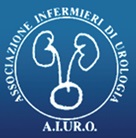
Don’t renew the advanced dressings placed on complicated and/or infected surgical site with different timing than indicated by the guidelines and the product specifications.
The increasingly widespread use of “advanced dressings”, i.e. of devices for the treatment of surgical wounds made up of biocompatible materials enhancing their healing, is the result of ongoing pharmacological, epidemiological and infectious diseases research.In order to ensure an appropriate patient care, it is necessary that nurses know the different types of products, both for choosing the most suitable one and to schedule how and when to replace it.
It is therefore necessary to neglect the philosophy of “daily medication” to grant a direct control of a complex surgical wound, and rather opt for renewal criteria guided by the clinical judgment of the practitioner and taking into account the characteristics of the product itself. It is also important to share information with other professionals using a language universally shared and preferably accompanied by iconography.
Sources
1. H Vermeulen, D Ubbink, A Goossens, R de Vos, D Legemate. Dressings and topical agents for surgical wounds healing by secondary intention. Cochrane Database of Systematic Reviews 2004.
2. Chaby G, et al. Dressings for acute and chronic wounds: a systematic review. Arch Dermatol. 2007 143(10):1297-304.
3. Pollard T. Wound care handbook 2008-2009. The comprehensive guide to product selection. Londra: MA Healtcare Ltd; 2008.
4. Magill, S.S., Edwards R.J, Stat M. et al. Multistate point-prevalence survey of health care-associated Infections. New England Journal of Medicine, 2014; 370(13): 1198-208.
Attention. Please note that these items are provided only for information and are not intended as a substitute for consultation with a clinician. Patients with any specific questions about the items on this list or their individual situation should consult their clinician.


Recent Comments